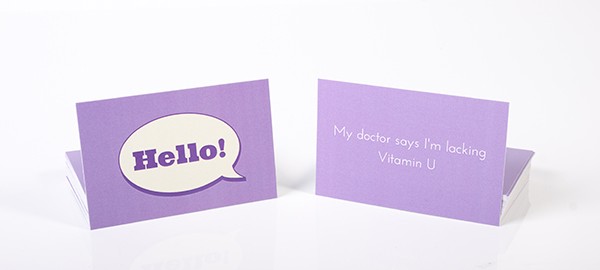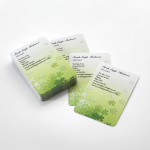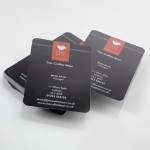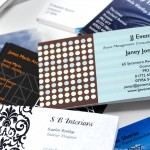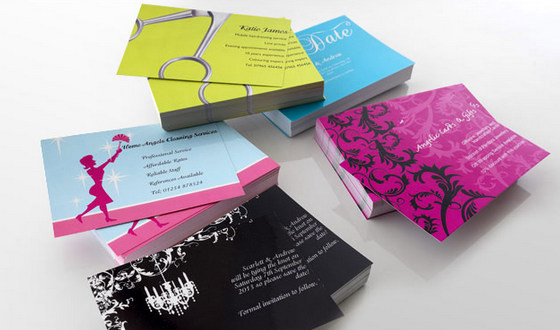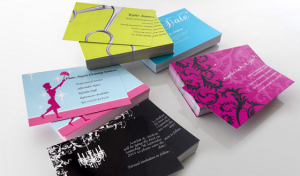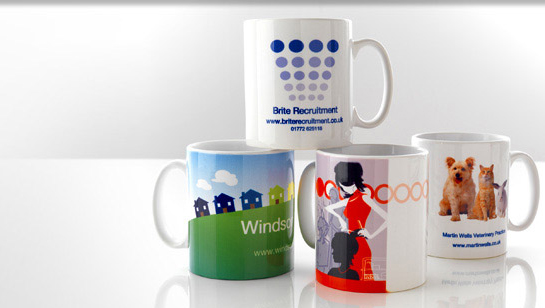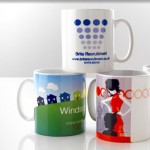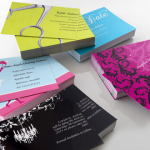It can be exciting to have your very own business cards, especially if you’re just starting out in your professional career or have just started your own business. You may be tempted to hand your business card out to everyone that you see.
However, there is some etiquette about business cards that you should be aware of in order to make your business cards as effective as possible. What you say and what you do when you hand them out can have a significant impact on whether or not people are going to take your business card and use it. The goal here is to help you understand the important etiquette surrounding giving out business cards, including what you should say to be as successful as possible in your professional endeavours.
Create a Good First Impression
You want to be very tactful when handing out business cards. This is often the first impression that someone gets of you, which means that you want to make sure that it’s a positive one.
Of course, you should be polite: smile, make casual conversation and ask questions about the other person – don’t make it all about you. If you come across as conceited or only concerned with yourself, they won’t be interested in working with you.
When you hand out your business card, you should say something along the lines of “Here’s my business card – I look forward to potentially working with you and your company.” You should also ask for their card, giving you the opportunity to follow up with them rather than having to wait for them to contact you.
Don’t Hand Out your Cards Indiscriminately
The idea of handing out business cards can be so exciting that you may just start handing them out to everyone that you talk to. However, this can give off the wrong impression of you. The people receiving the card may think that you’re too anxious to give your card away or are insecure.
In either case, they may be hesitant to use your card to contact you. You don’t want to look desperate. Wait until the time is right to give out your card, after you’ve discussed what you can do and if they seem interested.
Time it Correctly
There is actually a right time when it’s ideal for handing out your business card. You just need to be patient enough to wait for it. Ideally, you will wait until the moment that the other person will want or need the information that you have on your business card, or will specifically ask for your details.
There may be a moment where you and the other party agree that you want to talk further on the topic of doing business together. This is the perfect time to give out your card. Don’t forget to ask for theirs in return if they don’t hand it to you at the same time.
If such an opportunity doesn’t naturally arise, wait until your conversation naturally concludes, and then say “I’d love to work with you/hear from you in the future – here’s my card”.
Say, Don’t Ask
Try to avoid asking if the other party would like one of your business cards. This, of course, gives them the opportunity to say ‘no’ – and you don’t really want to give them that option, if you’re trying to reach as many potential clients or contacts as possible.
Instead of asking “would you like a business card”, simply hand them one. Most people will automatically take something if it’s handed to them. Accompany it with something like “oh by the way, here’s my card – don’t hesitate to contact me any time!”
Handing Out Business Cards: What Not to Do
Now that you know exactly what to say and do when handing out business cards, here is a brief list of the things you shouldn’t do. These are all common mistakes that people make, especially when first starting out.
1. Never hand your card out to people as soon as you meet them. The only exception to this rule is when everyone is handing them out at the beginning of a meeting. Otherwise, this could make you seem desperate, and this will make people less likely to work with you.
2. Don’t give out your card to everyone you meet. The point of the business card is to be memorable and leave an impression on the person. Make yourself stand out by being selective on who you give your business card to.
3. Never give out multiple cards to a person unless they specifically ask you to. This can be misinterpreted as being presumptuous, which will have a negative impact on their impression of you. If they do ask for multiple cards, then you can do this without it reflecting poorly on you.
4. Don’t forget to write a follow-up email the next day, if you received their contact information too. This could be just to start a conversation, such as “Hey, really enjoyed meeting you” type email or you should send them information that you promised to. End the email saying that you hope to keep in touch.
5. Don’t forget to make notes on any business cards you receive after handing out your own. This will help you to refer back to the previous conversation when contacting them. This is a personal touch that will make the other person feel special and be more likely to work with you.
Business Card Design and Presentation Tips
Finally, before you start handing out your business cards, here are some general tips to follow when it comes to business card design and presentation. These tips will help your business card advertising to stand out and be memorable.
Your Business Cards Should Be Easily Accessible
Where are you going to keep your business cards when you’re handing them out? You don’t want to be in a position where you are saying what you need to say, then end up searching around for your business card and not being able to find one. This will look unprofessional.
Your business card should be in a memorable place that you can easily access. This can save you from some embarrassment in these important situations. And don’t just stuff them into a pocket, where they could get crumpled – consider keeping them in a folder or wallet.
Always Have Enough Business Cards
It’s a good idea to make sure that you have fully stocked yourself with plenty of business cards. You never know how many cards you are going to need for a meeting or event, so making sure that you have enough on you before attending any gathering is a good idea.
The last thing you want is for a potential client or professional contact to ask for a card, only for you to discover that you don’t have one to give.
Make Sure the Card Looks Good
Business cards can leave an impression on the person that you are handing your card to. It’s up to you to make sure that’s a positive impression. You don’t want to give them a card that isn’t visually appealing because this will reflect poorly on you and your business.
From having a stellar design to making sure that the card is crisp looking (not wrinkled or unevenly printed), you want to make sure that your business card is presentable. A professional printing site such as 123Print can help you design appealing and eye-catching business cards.
Reflect Your Desired Brand Image
It cannot be emphasized enough just how important your business card is to first impressions. That’s why it’s crucial that you take the time to see what your business card says about you and your brand. You want a card that you can be proud of, one that perfectly represents who you are and what your business is. You want a high quality card that is visually appealing, with the company logo for brand consistency.
Business cards are such an important part of doing business, but you need to make sure that you are doing the business card thing right. By using proper etiquette and knowing exactly what to say, you are going to be able to make the most out of your business card marketing tactics.
You just have to be sure that you have well-designed business cards that you are proud of and that you have enough on you for any event. Order your professionally printed business cards today at 123Print!
